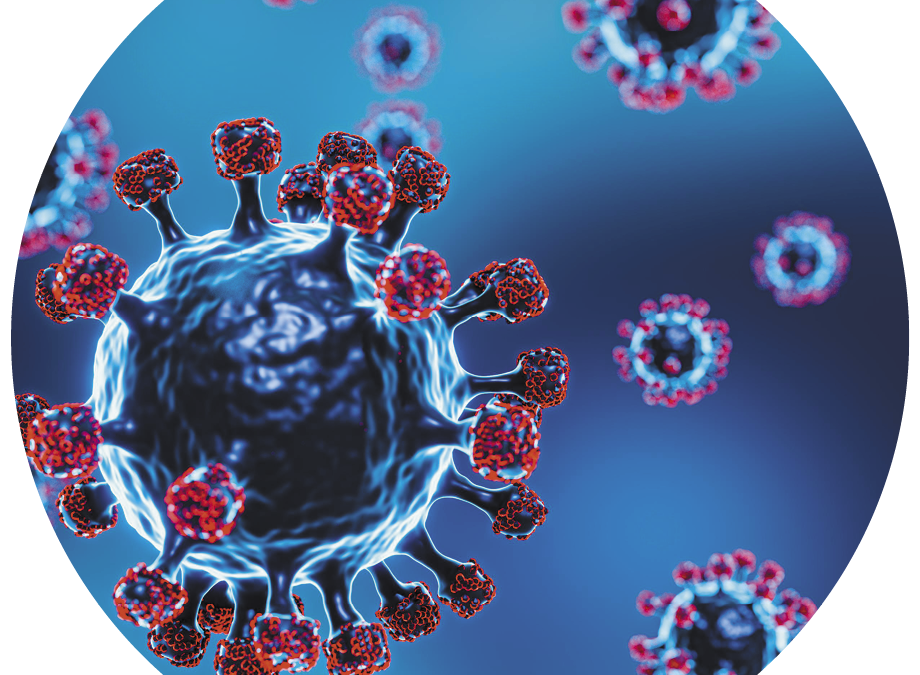
by IABA Team | Sep 20, 2021
People with autism aged 16 and younger and 40 to 60 have higher odds of being infected with COVID-19 than their neurotypical peers do, according to new studies. Researchers analyzed data from 16,406 people with autism in Israel’s largest healthcare organization. The team matched participants with a neurotypical person of the same age and gender.
The results show people with autism aged 16 and younger were 1.3X more likely to be infected with COVID-19. Participants with autism in the 40 to 60 age range had double the odds, the study noted. All results from this study appeared in the Journal of Autism and Developmental Disorders in July 2021.
“These findings suggest that people with autism or other neurodevelopmental disorders should be prioritized for vaccines,” said the lead medical researcher. “There is awareness towards the increased risk of morbidity among people with neurodevelopmental disorders, but I can’t really connect the link and say, ‘OK, they’ve taken our findings and turned it into a policy.’”
Research has just begun, which is why it’s uncertain why certain people with autism have elevated odds of contracting COVID-19. Researchers noted the differences seen in participants aged 40 to 60 could be associated with familial interactions, but there isn’t enough evidence yet.
ASD & COVID-19 Research Studies in the US
The number of autism-specific Medicaid waivers went up nearly 500% from 2004 to 2015, according to a new study. Many states use Medicaid waivers to provide services to people who may not be covered for ASD Services under Medicaid.
US researchers compiled a list of 269 different Medicaid programs focused on providing services to people with autism or intellectual disability. During this 11-year study, 26 states changed their Medicaid waivers to increase care options for people with autism. Nine states added a type of waiver called (waiver 1915C) specifically for people with autism, far outpacing new waivers for other types of intellectual disability.
“There’s a big difference in how states use Medicaid to meet the needs of people with autism throughout their life,” says Lindsay Shea, associate professor and director of the Policy and Analytics Center at the A.J. Drexel Autism Institute at Drexel University in Philadelphia.
ASD State Benefits
Three states researched in the study— Arizona, Rhode Island, and Vermont — do not offer any 1915C waivers, which was the main type of Medicaid program assessed in the study, thus they were not included in the study data. Arizona, Rhode Island, and Vermont use a different waiver, called a 1115, to provide long-term patient care.
Researchers also used data from autism prevalence studies to estimate the percentage of people with autism in each state who could potentially be served using 1915C waivers. The study estimated that Wisconsin could serve more than 20 percent of people with autism or intellectual disability through Waiver 1915C, while Minnesota could serve about 14 percent. For most states, the figure was far lower. The average state could serve an average of 4 percent of intellectually disabled residents or people with autism through Medicaid waivers.
ABA Therapy from IABA Consultants
If you have questions regarding autism treatment, education, or plans using ABA therapy, we are here for you! Our goal is to make sure no family is turned away due to financial constraints. Our therapy team would love to talk to you. Find the location closest to you and give us a call. We’re here for you.
Sources
Spectrumnews.org, Community Letter
Health Services Research, July 2021
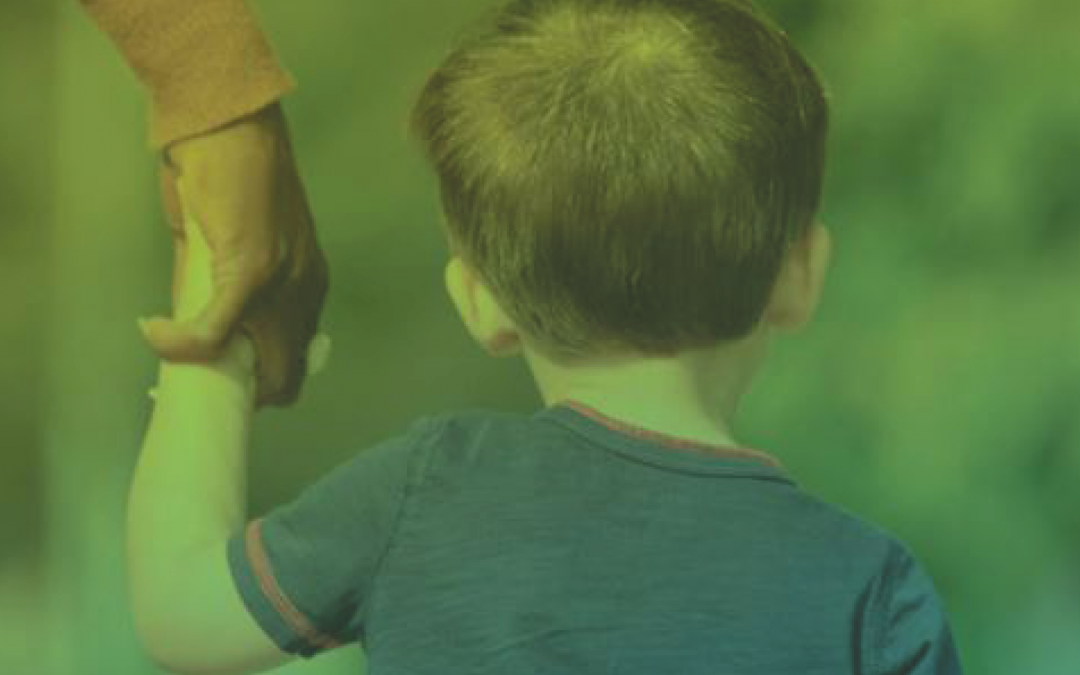
by IABA Team | Sep 13, 2021
A recent study in the July 2021 issue of the Journal of Autism and Developmental Disorders has prompted outrage among many autism researchers.
Every researcher on the study (a study focused on autism prevalence and related costs in the US over the next 40 years) has connections to organizations that have wrongfully tied autism to vaccines. This is a conflict of interest that none of the researchers on the study properly disclosed.
About the Researchers
Mark Blaxill, the study’s research lead, is editor-at-large of Age of Autism, a website that promotes distrust of vaccinations and the long-debunked link between vaccines and autism. Blaxill has made national news for his anti-vaccine views.
Toby Rogers, a study co-investigator, is a political economist. Rogers has written for the Children’s Health Defense Fund, a website that seeks to discredit vaccine safety. Another co-investigator, Cynthia Nevison, is a research associate at the University of Colorado and a former board member of SafeMinds, an organization that has unsuccessfully sought to link vaccines to autism.
“It’s abundantly clear that this paper doesn’t follow the journal’s policies,” says David Mandell, associate professor of psychiatry and pediatrics at the University of Pennsylvania and editor-in-chief of the journal Autism. “If you reference the Journal of Autism and Developmental Disorders’ conflict-of-interest guidelines, it says that certain ideological commitments and personal beliefs, personal relationships, all those things have to also be disclosed.”
The failure to properly disclose ties to certain organizational interests has led many researchers to disregard the study. The study researchers mentioned they are not paid to write articles or publish studies for politically motivated organizations in defense of the study.
Misrepresentation of Data
Autism prevalence data from the state of California was used to forecast that 3 to 10 percent of children in the United States will have autism by the year 2060. Based on this figure, the study mentioned the future societal cost of autism could be as high as $5.5 trillion per year. A third analysis claimed to model how prevention might reduce autism prevalence in the future.
Outside researchers say the data is flawed “because it was calculated by looking at really old data, comparing it to new data, and then assuming an exponential function.” Many researchers mentioned this issue as numbers that increased exponentially due to two totally different sets of data will always be too large.
One outside researcher noted “The rise in autism prevalence in recent years can be attributed to better observation and increased diagnosis on the community level. The base rate of autism isn’t magically rising because there’s some toxin that causes it, which is the underlying assumption [the paper’s authors] have.”
Prevention calculation in the study also used “magic numbers,” says Madison Hyer, a biostatistician at Ohio State University’s Wexner Medical Center. “Magic Numbers” means it isn’t clear what the word prevention means or even what’s being measured. “Are they saying that this is the cost of supporting or treating individuals with autism across their life in some way? Or is this the cost above the cost of supporting someone without autism? Everybody costs something.”
Outside Researchers on Prevention Prediction
Other comments from outside researchers mentioned “[the study] made some really severe assumptions about productivity … It looks like they were assuming anybody with autism would have zero productivity, but many people with autism work.”
Many outside researchers without organization ties observe that some people with autism may have disabilities and challenges, but that we as a society should think about how to support them. They’re still quite productive members of society.”
Some outside researchers noted that some of the data used to calculate productivity may have also come from questionable sources, says Kristen Bottema-Beutel, associate professor of teaching, curriculum, and society at Boston College in Massachusetts. “The data they use appears to be from a non-peer-reviewed PDF.”
“The Journal of Autism and Developmental Disorders was established in 1971, and its first editor-in-chief was Leo Kanner, one of the first clinicians to describe autism. Some researchers say the new study has diminished their perception of the journal, which has an impact factor of 3.047. (A journal’s impact factor reflects how often its articles are cited.)”
“[This paper] makes me question the peer review process,” says Brittany Hand, assistant professor at Ohio State University in Columbus, who also wrote a letter of protest to Volkmar. “How in the world does something like this get past [peer review]?”
ABA Therapy from IABA Consultants
If you have questions regarding autism treatment, education, or plans using ABA therapy, we are here for you! Our goal is to make sure no family is turned away due to financial constraints. Our therapy team would love to talk to you. Find the location closest to you and give us a call. We’re here for you.
Sources
Spectrumnews.org, Community Letter
The Journal of Autism and Developmental Disorders, July, 2021
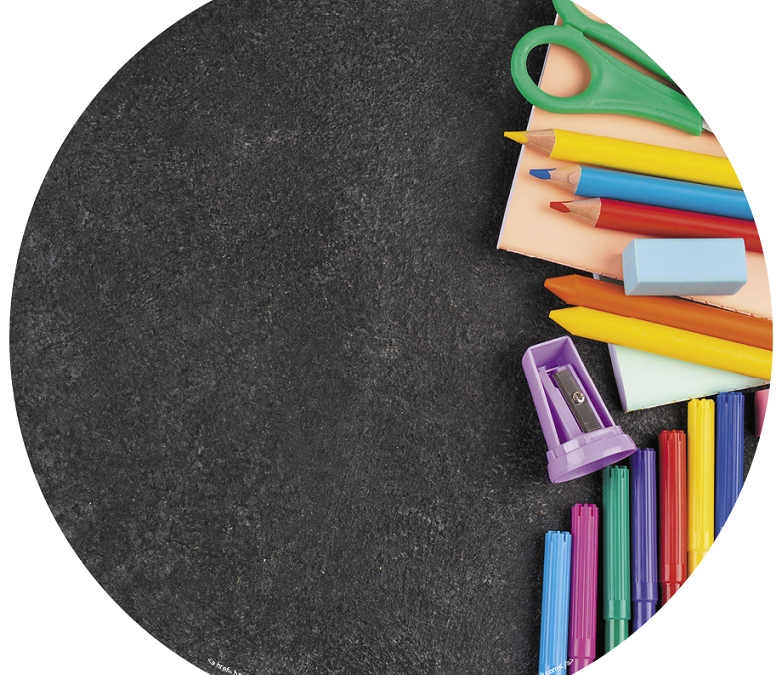
by IABA Team | Sep 6, 2021
We recently wrote a blog on what to do to start a smooth back-to-school transition for kids with ASD. The blog was fairly dense, so this one is going to take a more compact look in a checklist form for back-to-school needs.
ASD School Supply Checklist
Each school, daycare, or therapy clinic will have different requirements for school supplies. Before looking at our general list, you’ll definitely want to look over any list of supplies or materials provided by your child’s school.
The following are general items with brief guidelines to help you remember what your child may need at school.
- Lunch box. Having a reusable lunch box with compartments may help your child get into a regular lunch routine. Buying several of the same lunch boxes can help if you don’t have time to wash one every day. Compartments in lunchboxes can help your child understand where their regular lunch foods will be every day.
- Comfortable Clothing. Make sure your child is comfortable with all of the clothing they will be wearing to school. This is especially important for children with sensory issues as new clothing may not be comfortable. Be sure to have your child wear any new clothes at home before sending them to school in a new outfit. Buying the same outfits may also help some children get into a routine for school every day.
- Comfort Items. Make sure your child has their favorite comfort item to bring to school each day. Things like stuffed animals or a favorite blanket may help your child settle into a comfortable routine at school each day.
- Consistent School Supplies. After looking at a supply list provided by your child’s school, go shopping with your child and allow them to pick versions of the supplies they are comfortable with. Remember to buy extras of expendable supplies so they will have the same item they are comfortable with after the first one is done.
- Organized Backpack. A backpack with extra pouches or internal dividers is a great way to set up your child’s bag for easy use that can help them get into a regular school routine. Putting things in the same place can help them remember where their things are throughout the school day.
- Sensory Items. If your child has specific sensory issues, be sure to have a specific sensory comfort item packed in their backpack. Textured items like smooth stones or blankets made from specific materials can help if your child needs comfort during the school day.
- Books. Packing specific books can also help your child deal with difficult times during school. Books are a combination of comfort items and sensory items, as a teacher or aide can read the book to them if needed.
- Emergency Sheet. Be sure to include any information a teacher, aide, or therapist may need in your child’s bag. This sheet should include any and all information regarding sensory issues, specific behavioral issues, preferences, and anything else they may need to know if your child is having a difficult time.
- A Phone for Emergencies. This is not a phone for your child, but a phone for the teacher to use if your child really needs a parent. Definitely talk to your child’s school about policies and procedures for phones–don’t just pack one in their backpack. A basic flip phone is all that is required for emergencies where a parent is needed right away.
Remember, not all of these things will be required for your child. This list is for supplies you may have forgotten as the school year got here. Think of it as a list to jog your memory or help you modify school supplies to fit the needs of your child.
ABA Therapy from IABA Consultants
If you have questions regarding autism treatment, education, or plans using ABA therapy, we are here for you! Our goal is to make sure no family is turned away due to financial constraints. Our therapy team would love to talk to you. Find the location closest to you and give us a call. We’re here for you.
References
50 Back-to-School Tips from Autism Moms, Angelsense
Back To School Tips For Families With Autistic Children, Art of Autism
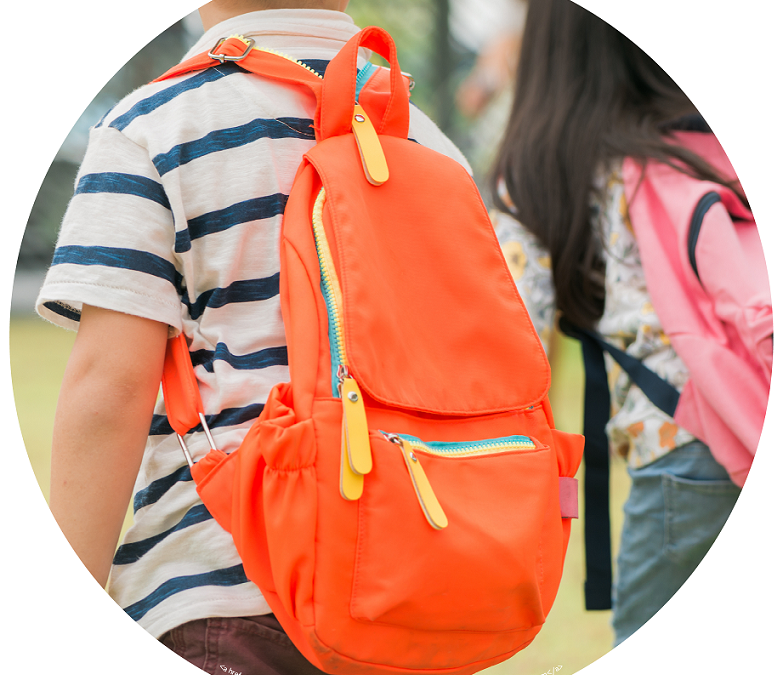
by IABA Team | Aug 17, 2021
Going back to school is tough for most kids, but especially so for kids with ASD. The change of scenery & routine from summer break to a school setting can be tough. The COVID-19 pandemic has made things especially difficult, which affects kids who were used to digital or in-home learning during the last school year.
So, how can we make it easier for kids with ASD to transition back to an in-school environment? There are many things that can be done, so let’s take a look.
Develop a Plan with Your Child’s Therapist or Doctor
Developing a plan with your child’s therapist, doctor, or other healthcare providers can help children with ASD smoothly transition into a new school year. Putting a plan in motion with rules & methods that will be consistent in school, therapy, and at-home settings can make a world of difference.
Make sure to have a clear schedule complete with calendar dates so your child is aware of the coming changes. Talking with your child’s therapist or other healthcare providers can help you select the best way to count down to important milestone days on your calendar.
Make a List of Your Child’s Skills & Needs
Having a prepared list of your child’s skills and needs will make any discussions with teachers or administrators easier. Being able to quickly ask and answer questions will allow you to get a full picture of what your child will need to expect.
Be sure to list strengths, weaknesses, sensory issues, and any other important parts of your child’s ASD-specific behavior. Having a list of these issues will help you quickly and efficiently communicate the needs of your child. Talking to your child’s therapist or doctor can help you build a list that will be sure to mention any special needs.
Talk to a School or School District Administrator
Finding out how your child’s school or school district helps children with ASD is a huge priority for your back-to-school plans. Learning about the specific resources available for your child at school will help you make decisions about the school year.
Depending on the level of care your child needs, some school districts offer great special education programs geared towards kids with ASD. Sometimes different options are available for students with ASD, allowing parents to select the best option for their child.
This is just general information–every school district is different. To find out pertinent information for your situation, please contact the local school district. It may be wise to check out several surrounding school districts if you don’t like the programs from the district you live in.
Visit Back-to-School Settings Before School Starts
Taking your child to the school they will be attending early a few times may help them get used to the new setting. Walking through the hallways & classrooms, looking at the gyms & washrooms, and checking out the playground may help familiarize your child with the school. Try to get your child as comfortable as possible with the new school before the year starts.
An even better way to familiarize your child with their new setting is getting to meet their teachers several times before the school year. Getting to know the teacher or therapists at the school can help your child get comfortable with their new setting.
Re-Establish a School Schedule
It is very important to get your child back on a regular daily schedule before school starts. Establishing consistent bedtime and morning routines will help your child be ready for school. Starting this schedule a few weeks prior to school can help get your child on track for the school year.
Other scheduling issues may also be important. Here are a few examples of other scheduling things to keep in mind:
- Transportation times
- Eating times
- Nap times
- After school routines
- Weekend scheduling
- Any regular trips to therapy or the doctor
It is important to talk to your therapist or healthcare provider about weekend scheduling. Getting information about keeping the daily schedule on weekends or being a bit more flexible are questions you should find answers to.
Be sure to coordinate your schedule with the school (teacher, therapist, administrator, etc) to make sure your child stays on track.
Lastly, be sure to inform your child about any upcoming breaks, starting a few weeks before the break. Using a calendar or other time management system can help transition your child from regular school to break time more smoothly. Using social stories and visual aids on a calendar can help your child understand what’s on the horizon.
Establish an In-School Schedule
Working with your child’s teacher or therapist to implement a regular in-school schedule can help your child settle into a comfortable school year. Having daily school activities occur at the same time every day lets your child know what to expect each day. Working with your school or school district before the year starts to get a plan in place can help implement this strategy.
If your child has specific needs that revolve around a schedule, be sure to talk to the school, teacher, or therapist about how to tackle the issue. Having plans in place before something happens may help prevent difficult situations from arising.
Discuss Education Plans with Your Child’s Teacher
Most people won’t agree 100% on any school curriculum. This is especially true when it comes to education for children with ASD. You need to talk to your school or school district to see what kind of specialized education and methods will be used in your child’s classroom.
Don’t panic if you have minor disagreements with the teaching plan–sometimes it may be beneficial. We need to be clear though; if you think something sounds really wrong, be sure to call your child’s therapist or doctor and discuss the issue. It may be miscommunication but it may also be something that you should avoid. Talking to an expert on the issue can help you sort things out.
If your child has specific sensory issues, be sure that the teacher has a safe space to use in difficult situations. Having a place where your child can reacclimate at their own pace will help avoid specific situations. If your child has special needs for a safe space area be sure to discuss this with the teacher before the school year begins.
Try to Get Your Child Used to Social Situations
This information may not apply to every child; be sure to talk to your child’s therapist or doctor before planning anything.
Schools contain a lot of people in one building. Getting your child used to more people being around by taking trips to more populated areas or running errands to larger stores may help prepare your child for the transition to school. Situations with other people involved may help your child get used to many different people being around in their school.
Talk About COVID-19
The COVID-19 pandemic is still ongoing, and many schools have different rules when it comes to things like masks. If your child has sensory issues with wearing a mask or using sanitizer you need to talk to your child’s school and your therapist or doctor to develop a plan.
Learning about your school district’s health policies can give you the information you need to discuss masks, sanitizing, and other COVID-19-related issues. Special accommodations may be able to be put in place for your child’s needs.
Be sure to acclimate your child to any COVID-19 procedures that will be used at school prior to the school year starting.
Keep Communicating with Your Child’s School
It is extremely important to keep regular communications with your child’s teacher and anyone else regularly involved with your child. Hearing about your child’s progress, issues, and general behavior will allow you to evaluate any immediate needs as soon as they pop up.
Talking with your child’s therapist or other healthcare professional can help you put together a list of questions to ask for status reports. Having a consistent report can show how your child is progressing and behaving on a regular schedule.
Stay Interested & Involved
We want to finish up with the most important piece of information regarding transitioning a child with ASD back to school; Stay interested and involved. None of the things above will stick if your child isn’t receiving attention and care at home. Following a schedule and engaging in activities that are in place in therapy, at school, and, most importantly, at home can help your child maintain consistent behavior.
Showing interest in your child’s school activities and progress can help them progress even more than just setting a plan. Using visual aids, like a calendar with milestone stickers, may help your child understand the progress they are making in school.
Again, talk to your child’s therapist, doctor, or other healthcare professionals to find the best way to stay engaged with your child’s education. Every child is different. Be sure your child is getting the best care they can by staying involved.
ABA Therapy from IABA Consultants
If you have questions regarding autism treatment, education, or plans using ABA therapy, we are here for you! Our goal is to make sure no family is turned away due to financial constraints. Our therapy team would love to talk to you. Find the location closest to you and give us a call. We’re here for you.
Sources
Helping Kids with Autism Transition Back to In-Person School, UC Davis
Back to School: 17 Tips to Help, Autism Speaks
Preparing for Back to School, Autism Speaks
Students with Autism, publicservicedegrees.org
COVID Autism Back to School Transition, Stonybrook Medicine
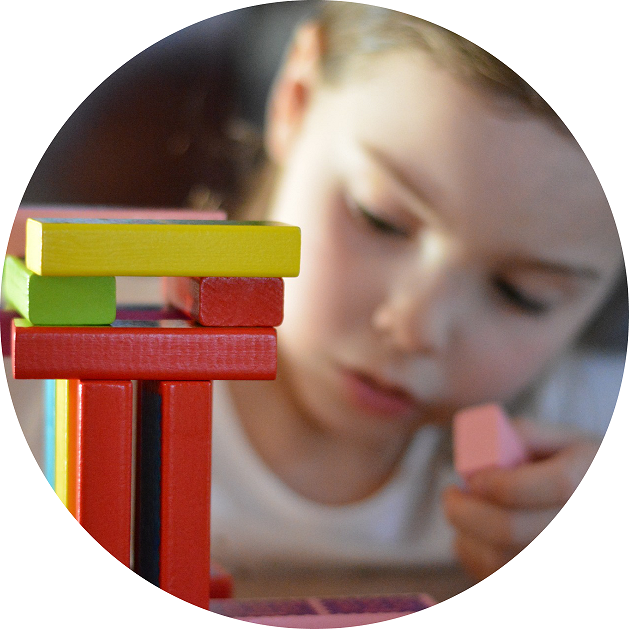
by IABA Team | Aug 17, 2021
Early social skills are emerging as one reliable indicator of ASD. Some research suggests that children who lack social gestures are likely to have pronounced autism traits later on and follow a lower skill trajectory.
In a 2017 study of 199 autistic toddlers and preschoolers, researchers found that the children who made few social-communicative gestures, such as pointing and imitating adults, had more severe autism traits a year later. The research showed these social behaviors predicted autism severity better than repetitive behaviors or living skills.
Conversely, children whose autism traits diminish tend to be relatively social early on. A 2020 study looked at toddlers who sought out social interactions and showed good pointing skills (to indicate objects) who ended up with only mild autism traits as adolescents.
Early Intellectual Abilities & Disabilities
Early intellectual ability can be another early indicator of ASD. In one study, autistic children who had intellectual disability (defined as having an IQ below 70) as toddlers were likely to show substantial difficulties both socially and academically through the age of 14.
On the other hand, children who show a substantial easing of autism traits and advances in life skills tend to be those without intellectual disability, experts say.
Adaptive Behaviors
Adaptive behaviors can also correlate with future academic success. A 2020 study had researchers analyzing records for 98 autistic adults from a study in which clinicians had evaluated daily living and other skills from ages 2 to 26. Using modeling software, the researchers divided the participants into two groups; those with low- and high-daily living skills.
Children in the high-skills group were more likely than those in the low-skills group to continue their education after high school, according to the research.
Socioeconomic Status
Socioeconomic status can be an early indicator of ASD, too. Low-income and minority children with autism tend to have less developed communication and adaptive skills in young adulthood than autistic children from more privileged backgrounds, according to a 2019 report.
Low-income children may have minimal exposure to early intervention programs to address speech, motor, and other difficulties. Family participation in these programs predicts “longer-term outcomes” during adolescence and adulthood.
Genetic Indicators
Many recent studies on genetics may also provide clues to a child’s future. About one-quarter of children with autism have a genetic variant linked to autism. Some of these may give rise to characteristic developmental paths. Data from a 2020 study looked at 65 people with an ASD-linked variant, aged 5 to 21.
The scientists assessed each person’s skill level and combined those data with families’ recollections about when these children had hit early milestones such as walking and talking. The team found that the children’s developmental course depended on the genetic variant they carry.
Children with an ADNP variant show significant motor delays almost across the board, generally not walking until 20 months or later. However, the earlier they do walk, the higher their scores on nonverbal IQ tests in childhood (ages 4 to 16) and young adulthood. In children with a CHD8 variant, early milestones do not predict their cognitive development as reliably. But the earlier they speak in phrases (whether at age 1 or 4, for example) the better their adaptive skills are likely to be in later childhood and young adulthood.
Research is still being conducted and analyzed on the relationship between genes and ASD.
ABA Therapy from IABA Consultants
If you have questions regarding autism treatment with ABA therapy, we are here for you! Our goal is to make sure no family is turned away due to financial constraints. Our therapy team would love to talk to you. Find the location closest to you and give us a call. We’re here for you.
Sources
Mapping the Futures of Autistic Children, spectrumnews.org






